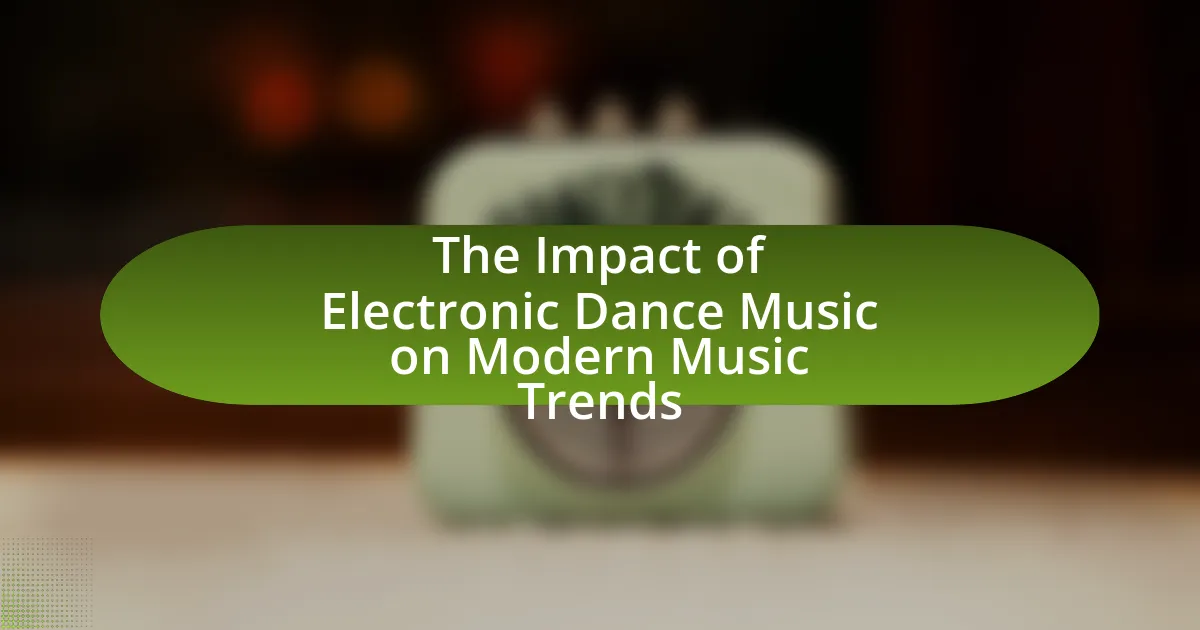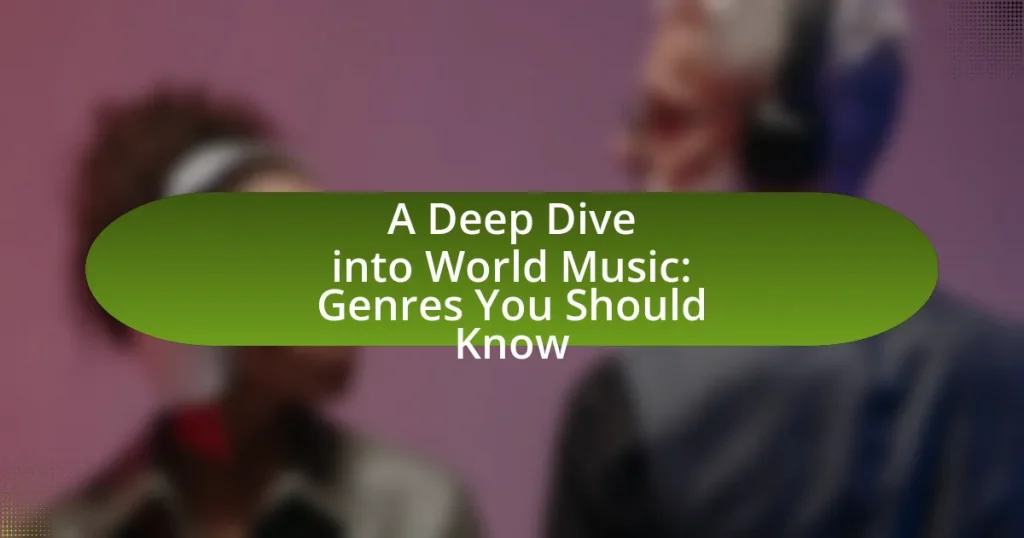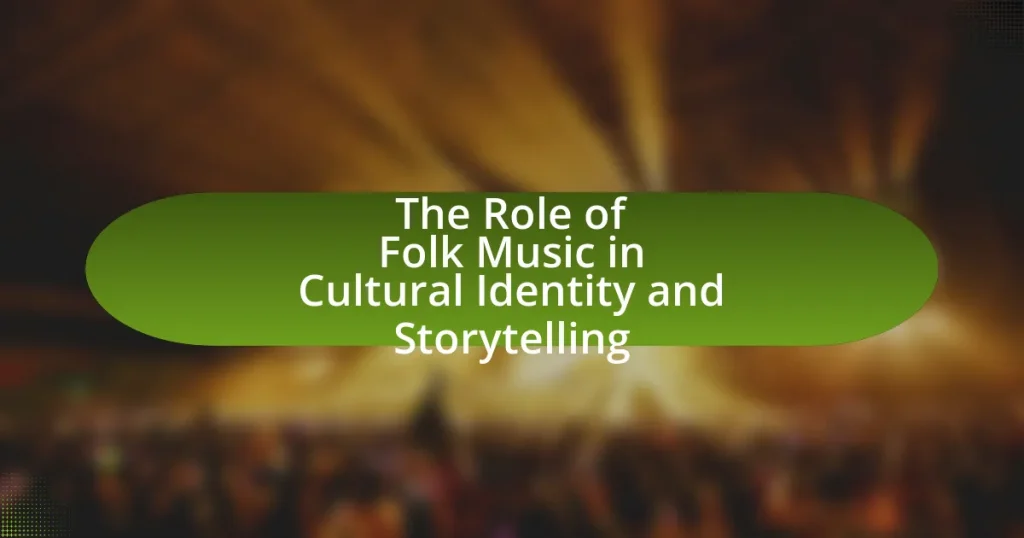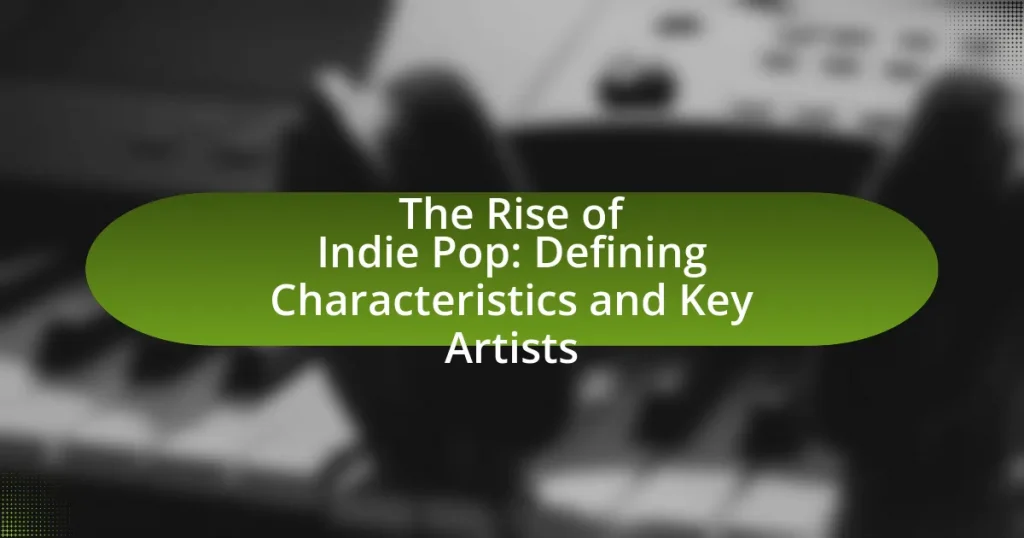Electronic Dance Music (EDM) has profoundly impacted modern music trends by integrating electronic elements across various genres, reshaping production techniques and performance styles. The genre has evolved from its underground roots in the late 1970s to mainstream popularity, with key milestones including the rise of house and techno, the establishment of rave culture, and the emergence of major festivals. Technological advancements have further enhanced EDM’s production capabilities and accessibility, influencing how music is distributed and consumed. The article explores EDM’s significance in today’s music landscape, its influence on other genres, and the challenges faced by artists, while also highlighting strategies for aspiring musicians to succeed within this dynamic scene.
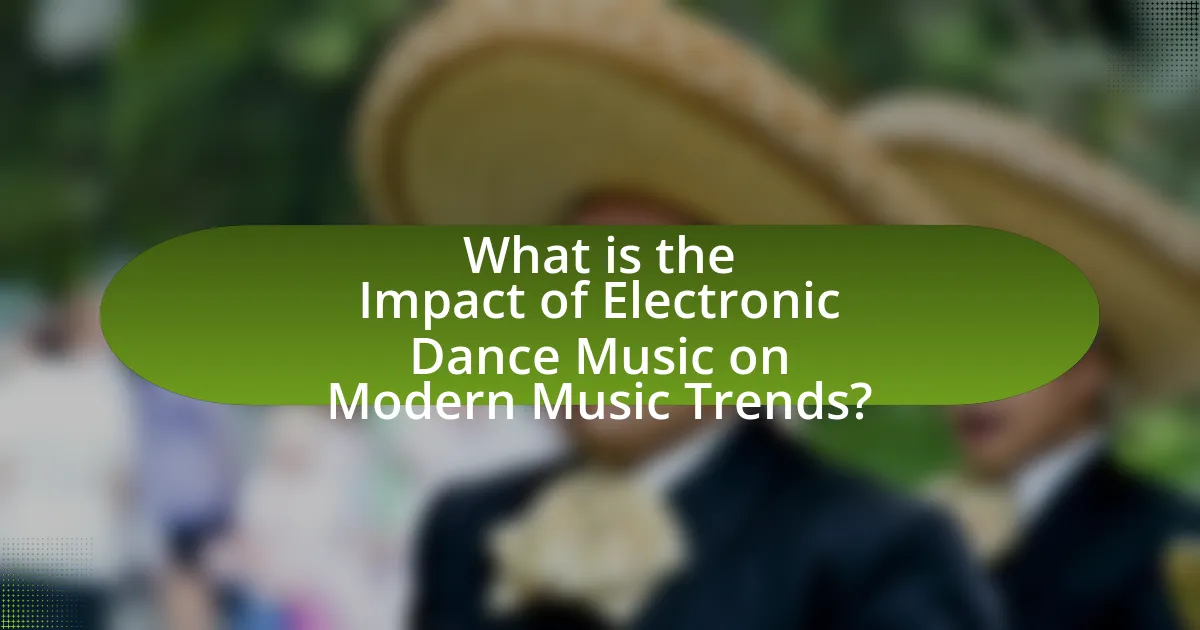
What is the Impact of Electronic Dance Music on Modern Music Trends?
Electronic Dance Music (EDM) has significantly influenced modern music trends by integrating electronic elements into various genres, reshaping production techniques and performance styles. The rise of EDM has led to the mainstream acceptance of electronic sounds, with artists across genres incorporating synthesizers, drum machines, and digital production methods. For instance, the Billboard Hot 100 has seen a surge in tracks featuring EDM influences, with artists like Calvin Harris and The Chainsmokers achieving chart-topping success. Additionally, festivals such as Tomorrowland and Ultra Music Festival have popularized live electronic performances, further blending the lines between DJ sets and traditional concerts. This shift has not only changed the sound of pop music but also impacted the way music is consumed, with streaming platforms prioritizing electronic tracks and playlists.
How has Electronic Dance Music evolved over the years?
Electronic Dance Music (EDM) has evolved significantly since its inception in the late 1970s, transitioning from underground scenes to mainstream popularity. Initially rooted in disco and electronic experimentation, genres like house and techno emerged in the 1980s, characterized by repetitive beats and synthesized sounds. The 1990s saw the rise of rave culture and the introduction of subgenres such as trance and drum and bass, which expanded the EDM landscape.
By the 2000s, EDM gained global recognition, with festivals like Tomorrowland and Ultra Music Festival attracting massive audiences. The genre’s mainstream breakthrough occurred in the 2010s, marked by collaborations between EDM artists and pop musicians, leading to chart-topping hits. Notable figures like Calvin Harris and David Guetta played pivotal roles in this crossover, further solidifying EDM’s influence on contemporary music.
The evolution of technology, including advancements in music production software and social media platforms, has also contributed to EDM’s growth, enabling artists to reach wider audiences and innovate their sound. As of 2023, EDM continues to shape modern music trends, influencing various genres and fostering a diverse array of styles and subcultures.
What are the key milestones in the history of Electronic Dance Music?
The key milestones in the history of Electronic Dance Music (EDM) include the emergence of disco in the 1970s, the development of house music in Chicago during the early 1980s, the rise of techno in Detroit around the same time, the establishment of rave culture in the late 1980s and early 1990s, the mainstream breakthrough of EDM in the 2000s, and the explosion of festivals and global recognition in the 2010s. Disco laid the groundwork for electronic sounds, while house and techno introduced distinct genres that shaped the EDM landscape. Rave culture popularized the communal experience of dance music, leading to significant events like the Love Parade in Berlin. The 2000s saw artists like David Guetta and Calvin Harris bringing EDM to mainstream audiences, culminating in massive festivals like Tomorrowland and Ultra Music Festival in the 2010s, which solidified EDM’s impact on modern music trends.
How have technological advancements influenced Electronic Dance Music?
Technological advancements have significantly influenced Electronic Dance Music (EDM) by enhancing production capabilities and expanding creative possibilities. The introduction of digital audio workstations (DAWs) like Ableton Live and FL Studio has allowed producers to create complex compositions with ease, enabling rapid experimentation and innovation. Additionally, advancements in synthesizer technology, such as the development of virtual instruments and plugins, have provided artists with a vast array of sounds and textures, facilitating unique sonic identities. The rise of online distribution platforms and social media has also transformed how EDM is marketed and consumed, allowing artists to reach global audiences instantly. These factors collectively demonstrate how technology has reshaped the landscape of EDM, making it more accessible and diverse.
Why is Electronic Dance Music significant in today’s music landscape?
Electronic Dance Music (EDM) is significant in today’s music landscape because it has reshaped popular music genres and influenced mainstream culture. The genre has seen exponential growth, with the global EDM market valued at approximately $7.4 billion in 2022, reflecting its widespread appeal and commercial success. Additionally, EDM festivals, such as Tomorrowland and Ultra Music Festival, attract millions of attendees, showcasing its cultural impact and ability to unite diverse audiences. The integration of EDM elements into pop music, as evidenced by collaborations between artists like Calvin Harris and Rihanna, further illustrates its pervasive influence on contemporary music trends.
What role does Electronic Dance Music play in popular culture?
Electronic Dance Music (EDM) plays a significant role in popular culture by influencing music trends, fashion, and social interactions. EDM has transformed mainstream music since the 1990s, with artists like Calvin Harris and David Guetta achieving chart-topping success, demonstrating its commercial viability. Festivals such as Tomorrowland and Ultra Music Festival attract millions, showcasing EDM’s ability to create communal experiences and shape youth culture. Additionally, EDM’s integration into pop music, as seen in tracks by artists like Lady Gaga and The Chainsmokers, highlights its pervasive impact on contemporary soundscapes. This genre’s rise has also led to the emergence of subcultures centered around dance, nightlife, and digital engagement, further solidifying its place in popular culture.
How does Electronic Dance Music influence other music genres?
Electronic Dance Music (EDM) significantly influences other music genres by integrating its rhythmic structures, production techniques, and sonic elements into various styles. For instance, pop music has increasingly adopted EDM’s upbeat tempos and synthesized sounds, as seen in hits like “Wake Me Up” by Avicii, which blends folk elements with electronic beats. Additionally, hip-hop artists frequently incorporate EDM drops and bass lines, exemplified by tracks like “Turn Down for What” by DJ Snake and Lil Jon, showcasing a fusion that enhances energy and appeal. The rise of subgenres like trap and future bass further illustrates EDM’s impact, as these styles borrow heavily from electronic production methods and sound design. This cross-pollination has led to a broader acceptance of electronic elements across the music industry, reshaping the soundscape of contemporary music.
What are the characteristics of Electronic Dance Music that shape modern trends?
Electronic Dance Music (EDM) is characterized by its use of synthesized sounds, repetitive beats, and a focus on rhythm, which collectively shape modern music trends. The genre often incorporates elements from various styles, such as house, techno, and trance, leading to a diverse sound palette that appeals to a wide audience. The prevalence of digital production techniques, including software like Ableton Live and FL Studio, allows for innovative sound design and accessibility for aspiring producers. Additionally, the rise of social media platforms and streaming services has facilitated the rapid dissemination of EDM tracks, influencing mainstream pop music and encouraging collaborations between EDM artists and traditional musicians. This blending of genres and the emphasis on high-energy performances at festivals and clubs have solidified EDM’s role in shaping contemporary music culture.
What are the defining elements of Electronic Dance Music production?
The defining elements of Electronic Dance Music (EDM) production include synthesizers, drum machines, and digital audio workstations (DAWs). Synthesizers create a wide range of sounds and textures, while drum machines provide rhythmic elements essential for dance tracks. DAWs serve as the primary platform for composing, arranging, and mixing music, allowing producers to manipulate audio and MIDI data effectively. These elements are foundational in shaping the genre’s distinctive sound, characterized by repetitive beats and melodic hooks, which have significantly influenced modern music trends. For instance, the rise of EDM has led to its integration into mainstream pop music, as seen in tracks by artists like Calvin Harris and David Guetta, who utilize these production techniques to create chart-topping hits.
How do the themes and lyrics in Electronic Dance Music differ from other genres?
The themes and lyrics in Electronic Dance Music (EDM) primarily focus on celebration, escapism, and emotional release, which sets them apart from other genres that often explore a wider range of personal and social issues. EDM lyrics typically emphasize feelings of joy, unity, and the experience of dancing, often using repetitive phrases and simple structures to enhance the euphoric atmosphere of the music. In contrast, genres like rock or hip-hop frequently delve into complex narratives, social commentary, and personal struggles, showcasing a broader emotional spectrum. For instance, while hip-hop may address themes of inequality and personal hardship, EDM remains centered on the collective experience of enjoyment and freedom, reflecting its roots in club culture and festival environments.
How does Electronic Dance Music affect the music industry?
Electronic Dance Music (EDM) significantly influences the music industry by reshaping production techniques, marketing strategies, and live performance dynamics. The rise of EDM has led to the integration of electronic elements in various genres, resulting in a broader acceptance of synthesized sounds and digital production methods. For instance, the popularity of EDM festivals, such as Tomorrowland and Ultra Music Festival, has created new revenue streams for artists and promoters, with the global electronic music market projected to reach $9.2 billion by 2025, according to a report by Allied Market Research. Additionally, EDM has driven collaborations between mainstream pop artists and electronic producers, exemplified by tracks like “Where Are Ü Now” by Justin Bieber and Skrillex, which topped charts worldwide. This genre’s impact extends to social media marketing, where platforms like TikTok have become essential for promoting EDM tracks, further solidifying its role in contemporary music trends.
What changes has Electronic Dance Music brought to music distribution and consumption?
Electronic Dance Music (EDM) has significantly transformed music distribution and consumption by promoting digital platforms and streaming services as primary channels for accessing music. The rise of EDM in the 2010s coincided with the growth of platforms like Spotify and SoundCloud, which allowed artists to distribute their music directly to fans without traditional record label constraints. This shift enabled a more democratized music landscape, where independent artists could gain visibility and reach global audiences. According to a 2020 report by the International Music Summit, the global electronic music market was valued at $7.3 billion, highlighting the genre’s influence on consumption patterns. Additionally, EDM’s emphasis on live events and festivals has driven ticket sales and merchandise, further altering how fans engage with music beyond just listening.
How has the rise of Electronic Dance Music impacted live performances and festivals?
The rise of Electronic Dance Music (EDM) has significantly transformed live performances and festivals by increasing audience engagement and enhancing production quality. EDM festivals, such as Tomorrowland and Ultra Music Festival, have attracted millions of attendees, showcasing elaborate stage designs, light shows, and immersive experiences that elevate the overall atmosphere. According to a 2019 report by the International Music Summit, the global electronic music market was valued at $7.3 billion, highlighting the genre’s economic impact on the festival industry. Additionally, the integration of technology, such as live streaming and interactive elements, has allowed for broader audience participation, further solidifying EDM’s influence on live events.
What are the challenges faced by Electronic Dance Music artists today?
Electronic Dance Music (EDM) artists today face several significant challenges, including market saturation, financial instability, and the impact of digital streaming. The rise in the number of EDM producers has led to a crowded market, making it difficult for individual artists to stand out and gain recognition. Financial instability is prevalent due to the unpredictable nature of income from live performances and streaming royalties, which can fluctuate widely. Additionally, the dominance of digital streaming platforms has altered revenue models, often resulting in lower payouts for artists compared to traditional sales. These factors collectively hinder the ability of EDM artists to sustain their careers and achieve long-term success in the industry.
How do market saturation and competition affect Electronic Dance Music artists?
Market saturation and competition significantly impact Electronic Dance Music (EDM) artists by limiting their visibility and revenue potential. As the EDM scene has grown, the number of artists has increased, leading to a crowded marketplace where it becomes challenging for individual artists to stand out. According to a 2020 report by the International Music Summit, the global electronic music market was valued at approximately $7.3 billion, indicating substantial growth but also heightened competition among artists for audience attention and festival slots. This saturation forces artists to innovate and differentiate their sound, branding, and marketing strategies to capture listener interest and secure performance opportunities.
What are the common misconceptions about Electronic Dance Music and its artists?
Common misconceptions about Electronic Dance Music (EDM) and its artists include the belief that EDM is not “real” music, that all EDM artists rely solely on technology without musical talent, and that the genre promotes a hedonistic lifestyle. These misconceptions arise from a lack of understanding of the genre’s complexity and the skills required to produce it. For instance, many EDM artists are trained musicians who compose intricate melodies and harmonies, as evidenced by artists like Deadmau5 and Calvin Harris, who have backgrounds in music theory and production. Additionally, the perception that EDM is merely repetitive beats overlooks the diverse subgenres and innovative techniques used by artists, such as layering and sound design. Furthermore, while some EDM events may emphasize partying, many artists advocate for positive messages and community, as seen in festivals like Tomorrowland, which promote inclusivity and creativity.
How can aspiring artists leverage the trends in Electronic Dance Music?
Aspiring artists can leverage trends in Electronic Dance Music (EDM) by incorporating popular sounds, collaborating with established artists, and utilizing social media platforms for promotion. By analyzing current chart-topping tracks, artists can identify key elements such as tempo, instrumentation, and vocal styles that resonate with audiences. Collaborating with established EDM producers can enhance their production quality and expand their reach, as seen with artists like Zedd and Alessia Cara, who gained exposure through collaboration. Additionally, using platforms like TikTok and Instagram allows artists to showcase their music and engage with fans, capitalizing on viral trends to increase visibility. According to a 2021 report by the International Music Summit, the global electronic music market was valued at $7.3 billion, highlighting the genre’s significant influence and potential for aspiring artists.
What strategies can new artists adopt to succeed in the Electronic Dance Music scene?
New artists can succeed in the Electronic Dance Music scene by focusing on building a strong online presence, networking with industry professionals, and continuously improving their production skills. Establishing a robust online presence through social media platforms and music streaming services allows artists to reach a wider audience and engage with fans. Networking with other artists, DJs, and producers can lead to collaborations and opportunities for gigs, which are crucial for gaining visibility. Additionally, honing production skills through practice and education, such as online courses or tutorials, ensures that artists can create high-quality tracks that stand out in a competitive market. These strategies are supported by the fact that successful artists often leverage social media for promotion and collaboration, as seen with artists like Marshmello and Zedd, who have effectively utilized these methods to build their careers.
How can collaboration within the Electronic Dance Music community enhance an artist’s career?
Collaboration within the Electronic Dance Music (EDM) community can significantly enhance an artist’s career by expanding their audience reach and fostering creative innovation. When artists collaborate, they combine their unique styles and fan bases, which can lead to increased visibility and new opportunities. For instance, a study by the International Music Summit in 2020 highlighted that collaborative tracks often achieve higher streaming numbers and chart positions compared to solo releases, demonstrating the commercial benefits of such partnerships. Additionally, collaborations can lead to networking opportunities, allowing artists to connect with industry professionals and gain access to larger events and festivals, further solidifying their presence in the EDM scene.
